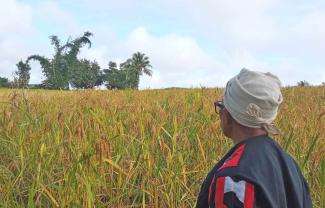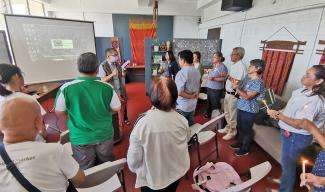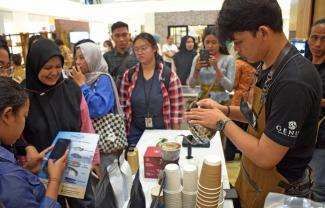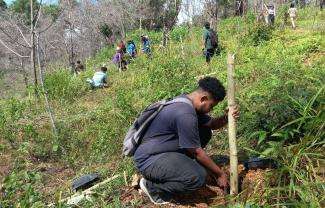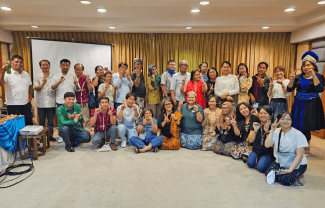Hybrid rice varieties, or those produced by breeding two different parents, made their inroads into Philippine farms in the 1970s, gradually supplanting indigenous varieties and making the farmers dependent on chemical inputs like fertilizers and pesticides. In addition, the capital requirements for producing those varieties pushed many small farmers into indebtedness.
Such wasn’t the case for the Kirenteken Menuvu community in Serukadang, Barangay New Visayas in Don Carlos, Bukidnon. Along with their efforts to defend their ancestral domain, they have managed until now to preserve indigenous rice varieties handed down by their ancestors.
Datu Ketingawan Benjie Ompigan, the ponggos (leader) of the tribe, said they have never used hybrid varieties unlike the neighboring farms around them. “Paninglan mi kung mogamit mig hybrid (We will be held accountable),” alluding to what their spirit guardians would do if they use such varieties.
He cited that each cropping season they would plant at least seven of the 14 varieties that they currently have in an area measuring no more than an hectare. He recalled that in his younger days, his elders produced close to 30 varieties but that many of these disappeared as time went by.
Of the 14 varieties that they currently have, he identified some of them as bolaw, guyod, and dinorado. Most people are quite familiar with dinorado due to its distinct flavor and aroma, although it’s seldom available in the market and commands a higher price.
Datu Benjie said the amount of yield depends on how the farmers take care of their crops. He said that unlike the hybrid varieties that are planted in rice paddies and require much water, the indigenous ones thrive in upland areas and are rain-fed. He said they only plant once a year and observe a fallow so the land may recover.
He recounted that their ancestors followed a method of shifting cultivation. After harvest, they would open up another area for farming to allow trees to regenerate in the previously tilled spot. “Besides,” he added, “opening up a new farm requires less effort compared to planting again in the same spot and getting a poor harvest.”
Alfred Kenneth Depala, agroecology officer at the Samdhana Institute, said that in addition to those already produced by the tribe, they are looking for other indigenous varieties for the community to compare with.
He said that agrocecology-based farming is based on an area’s environmental conditions and indigenous culture. For the Serukadang community, it involves sustaining the production of indigenous rice varieties based on indigenous knowledge system and practices to achieve food security.
“The food security program should be based on the acceptability of certain crops and their link to culture,” he explained.
He clarified though that apart from using indigenous varieties that don’t need chemicals, the tribe already has an existing sustainable food system as evidenced, for example, by the presence of rice terraces and other traditional practices.
He added that while chemicals are being used to protect hybrid rice varieties from pest infestation, they have introduced certain plants that would naturally drive the pests away from the crop.
Alfred cited that they have started teaching the method of producing indigenous rice varieties to children in the lower grades.
Farming rituals, observance of seasons
Datu Benjie said that among the indigenous peoples the choice of areas for farming isn’t random but based on the signs that may be divined during rituals. Certain rites are observed when clearing a patch of land, as well as before planting and harvesting.
“Before harvesting rice we’d take some grains for a ritual called sawit or lagti. We also cook unripe grains into pinipi*, ” he said.
He emphasized that, as practiced ever since by their tribe, their planting season is from February to May. He cautioned that it’s not advisable to plant after May 3 because it will result in a bad harvest.
He, however, lamented that it’s no longer possible to accurately predict the seasons due to changes in weather patterns. “That’s why we are planting more trees as our contribution to helping address climate change,” he concluded.
*pinipig to lowlanders
